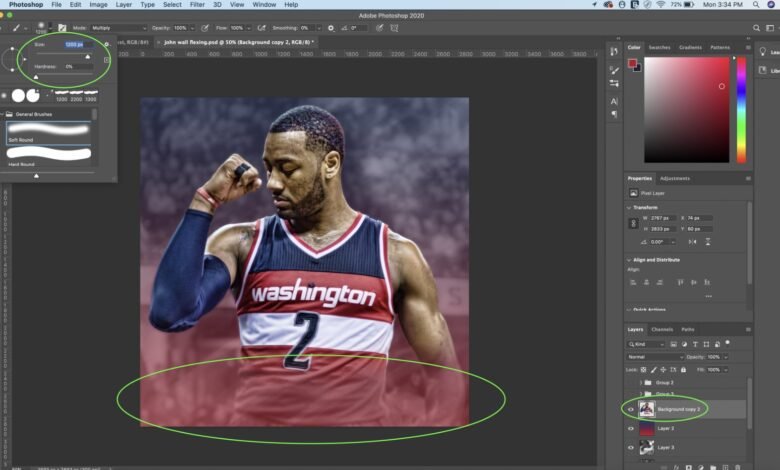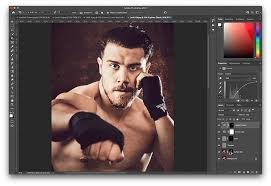Ordinary to Extraordinary: Sports Photo Editing in Photoshop
Sports Photo Editing in Photoshop

In today’s fast-paced digital world, capturing the perfect sports photo has become an art in itself. With the rise of social media and the demand for visually appealing content, every sports enthusiast and professional photographer wants their photos to stand out. And that’s where the magic of photo editing comes into play. With the right skills and knowledge, anyone can transform an ordinary sports photo into an extraordinary one with just a few clicks using Adobe Photoshop.
So, what exactly is sports photo editing and how can it take your sports photography to the next level? Let’s dive in and explore the world of sports photo editing in Photoshop.
Understanding Sports Photo Editing
In simple terms, sports photo editing is the process of enhancing and manipulating a sports photograph to make it more visually appealing and impactful. This could include adjusting the color and lighting, removing distractions, adding effects, and more. It allows photographers to transform their images into works of art, capturing the intensity and emotion of the sports moment.
Photoshop is the most popular tool used for sports photo editing. With its extensive range of features and tools, photographers can create stunning images that leave viewers in awe. But it’s not just about knowing how to use Photoshop, it’s about understanding the techniques and knowing which ones to apply to each photo.
Color and Lighting Adjustments
One of the most crucial elements of sports photography is getting the right colors and lighting. This can make or break the overall look of an image. In Photoshop, there are various tools that can help you achieve the perfect color and lighting for your sports photos.
The first step in color and lighting adjustments is to make sure your photo is properly exposed. This means making sure that the lighting in the photo is balanced, and there are no areas that are too bright or too dark. You can use the exposure adjustment tool in Photoshop to make these changes. This tool allows you to adjust the brightness, contrast, and shadows in your photo to get the desired result.
Once you have the exposure right, you can move on to color adjustments. In sports photography, the colors tend to be vibrant and saturated, so you want to ensure that the colors in your photo pop. This can be achieved by adjusting the saturation and vibrance levels. These can be found in the Hue/Saturation tool in Photoshop. You can also make slight color adjustments using the Color Balance tool, which allows you to adjust the levels of red, green, and blue tones in your image.
Removing Distractions and Cropping
In sports photography, there are often distractions in the background that can take away from the main subject. This could be a stray hand or a piece of equipment that doesn’t belong in the photo. Fortunately, Photoshop has a powerful tool called the Content-Aware Fill that can help you remove these distractions.
With the Content-Aware Fill, you can simply select the area you want to remove and let Photoshop do the rest. The tool will analyze the surrounding areas and fill in the selected area with similar colors and textures, seamlessly removing the distraction from the photo.
Another way to enhance the composition of a sports photo is by cropping. By cropping, you can change the size and aspect ratio of your photo, and focus on the most important elements. This will also help in removing any unwanted elements from the frame.
Adding Effects
To take your sports photos from ordinary to extraordinary, you can also add some creative effects using Photoshop. This could include adding a vignette, creating a dramatic black and white photo, or even adding some special effects.

The vignette effect is a subtle, yet powerful technique that can draw the viewer’s attention to the center of the photo. It involves darkening the edges of the photo, creating a vignette effect that highlights the subject and adds depth to the image.
Black and white photos have a timeless and classic quality that can add depth and emotion to a sports photo. In Photoshop, you can use the Black & White adjustment layer to convert your photo to black and white and adjust the different tones in the image for the desired effect.
If you really want to add some creativity to your sports photos, you can use the special effects available in Photoshop. These range from adding lens flares, bokeh, and light leaks, to creating a dramatic sky or adding scrolling text.
Sharpening and Resizing
A final yet crucial step in sports photo editing is sharpening and resizing your image. This not only enhances the overall quality of the photo but also prepares it for different platforms such as social media or print.
In Photoshop, the Unsharp Mask tool can help you sharpen your image by making edges appear crisper and more defined. However, it’s essential to use this tool sparingly, as over-sharpening can result in a grainy and unnatural look.
When resizing your photo, it’s important to maintain its quality and ensure that it’s not too small or too large. For social media, it’s recommended to resize photos to a width of 1080 pixels and for print, a resolution of 300 dpi is ideal.
Conclusion
Editing sports photos in Photoshop can turn an ordinary photo into a breathtaking one. With the right techniques, you can enhance the colors and lighting, remove distractions, add effects, and make your photos stand out. However, it’s important to remember that the photo itself is just as important as the editing. So, make sure to capture the perfect moment and use photo editing as a tool to enhance and elevate your photos. With practice and experimentation, you can take your sports photography from ordinary to extraordinary.



